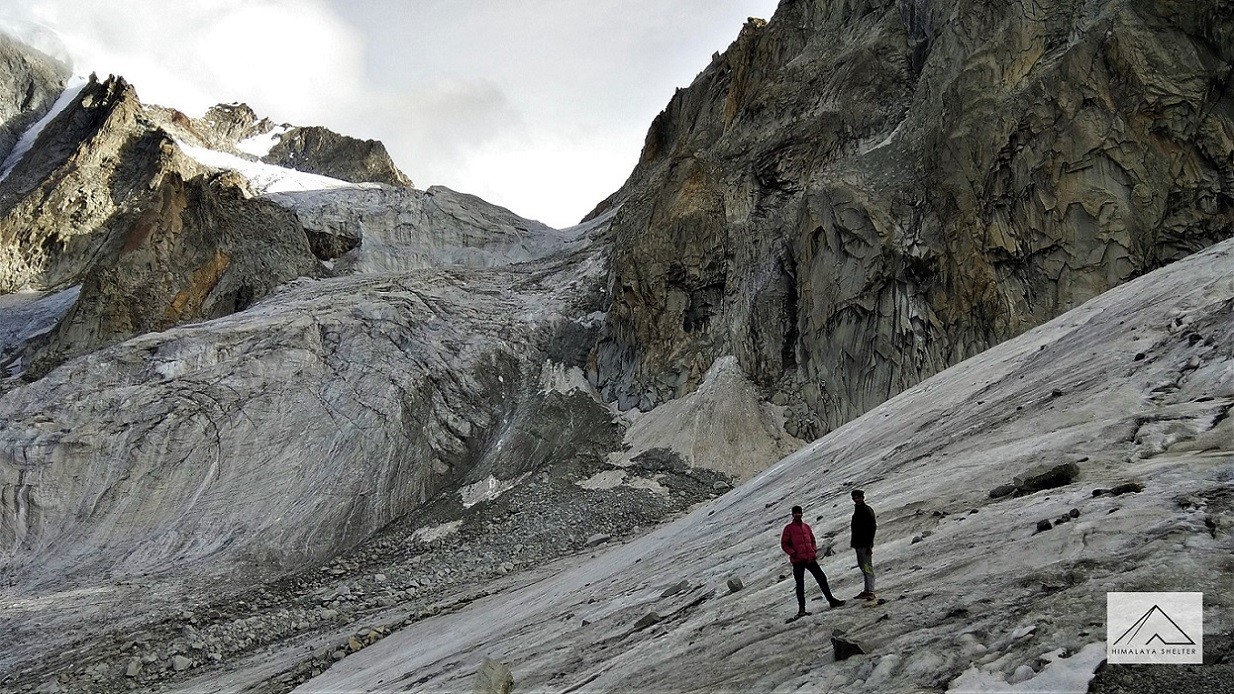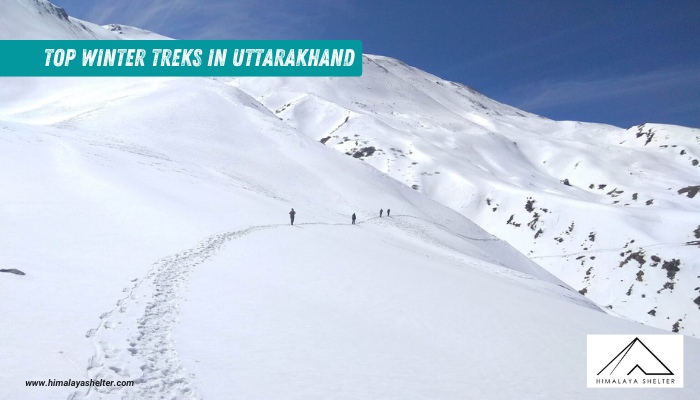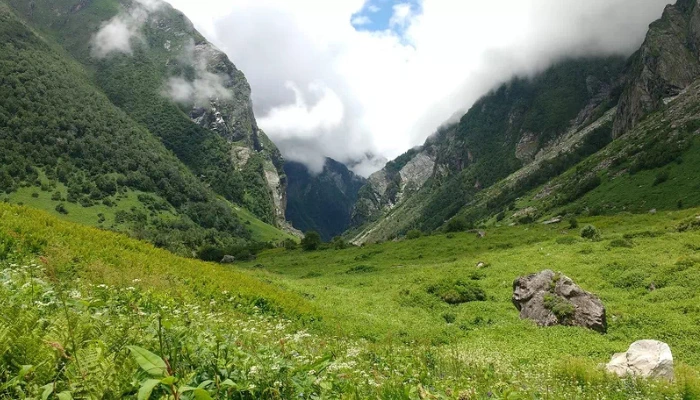
Namik Glacier Trek
TREK DIFFICULTY
Moderate
TREK DURATION
8 Days
HIGHEST ALTITUDE
3600 mts
GROUP SIZE
12
TREK DISTANCE
80 Km
BASECAMP
Uttarakhand
BEST TIME
April to June and September to November
PICKUP POINT
Dehradun (Prince Chowk)
Namik Glacier Trek
The Namik Glacier Trek is an awe-inspiring journey through the rugged terrain of the Uttarakhand region in India. This expedition is a testament to nature's grandeur, offering trekkers a chance to immerse themselves in the pristine beauty of the Himalayan range. Spanning approximately 8-10 days, this adventure is a blend of breathtaking landscapes, challenging terrain, and unparalleled views.
Starting from the charming village of Gogina, trekkers embark on a voyage that takes them through dense forests, alpine meadows, and quaint villages. The Namik Glacier Trek is characterized by steep ascents and descents, rocky pathways, and occasional river crossings. As trekkers ascend, they are treated to panoramic vistas of the surrounding mountains, with peaks like Nanda Devi and Nanda Kot dominating the skyline.
The journey unfolds with each step, revealing the diverse flora and fauna of the region. Lush greenery gradually gives way to rocky terrain, and trekkers may encounter elusive wildlife like Himalayan birds and small mammals. Along the way, pristine streams and waterfalls offer refreshments, while the melodious sounds of nature provide a soothing backdrop.
History of Namik Glacier Trek
The name 'Namik' is derived from namak (salt). It is said that the glacier and the nearby springs excluded salt which was considered sacred. This salt was used in many religious and medical activities due to its purifying medicinal properties. Namik glacier was also close to the Salt Route or Pithoragarh-Tibet trade route where salt, wool and grains were exchanged by traders and locals.
The nearby villages like Gogina, Tejam and Namik were once considered as halting places and pilgrims routes by traders and sages who used to stay here. Many sages and yogis meditated here in solitude. The region is also associated with the Mahabharata as it is believed to be the place where Pandavas travelled and meditated.
Namik Glacier region was once under the influence of the Katyuri dynasty (7th-11th century CE) and later came under the Chand dynasty of Kumaon. However due to remote and difficult terrain it remained uninhabited.
Today, Namik glacier holds high ecological importance for its contribution to Ramganga river and impact of climate change on Himalayan glaciers. It is part of Uttarakhand eco-tourism and cultural preservation program by forest and tourism departments.
Highlights of the Namik Glacier Trek
- Sacred Salt Springs:
Namik glacier is home to many salt springs which are considered sacred. These salt springs once excluded salt and were considered revered. The word 'Namik' itself derives from the word namak (salt). Namik glacier is the origin of the Ramganga river and plays a crucial role in balancing ecology.
- Hidden Caves of Shiva:
Along the trail you will find many hidden ancient caves which were believed to be the place where Lord Shiva himself meditated. Many sages, Shiva devotees and yogis also meditated here for years in solitude. These hidden caves and rock shelters tell many mythological stories and create mystical aura. For spiritual and solitude seekers this place is heaven.
- Remote Villages & Kumaoni Culture:
The trail to Namik glacier passes through remote and quaint villages like Gogina and Namik where you can see and feel the true authentic Kumaoni culture. Wooden houses, traditional farming and warm hospitality, everything offers a vibrant glimpse of peaceful mountain living which connects you with simplicity and meaningfulness.
- Breathtaking Himalayan Views:
When trekking to the Himalayas, how can forget to view the majestic peaks of it. Nanda Devi, Nanda Kot, Panchachuli and many snow-covered summits can be spotted from here. At the time of sunrise, they appear even more beautiful and closer. The absence of crowds makes this experience more personal and unforgettable.
- Rich Flora and Fauna:
The trail passes through beautiful and dense oak, rhododendron and deodar forests which look more lush green in summer. You might spot barking deer, Himalayan langurs, elusive musk deer and many singing birds. In spring and summer, the blooming wildflowers and snowclad peaks create a beautiful backdrop for photography lovers.
Difficulty Level of Namik Glacier Trek
Namik glacier trek is located in the Kumaon Himalayas of Uttarakhand. The glacier sits at an elevation of around 3,600 m and the trail’s highest point reaches close to 3,800 m. It falls under the category of moderately difficult trek. The trek is suitable for experienced trekkers but beginners and families with teenagers can attempt it with proper fitness, preparation and guidance.
The duration of the trek is 7 to 8 days, including travel days. Trekkers have to walk 5 to 7 hours daily on average. The trail passes through dense forests, quaint villages, ridgelines, rivers, water streams, meadows and steepy ascents. There are gradual climbs and short rocky sections but they don't require technical climbing skills.
For safety and navigation, it's advisable to go with a certified guide or join a team, especially for beginners. Trails are not well-marked and acclimatization is important due to altitude gain.
On high-altitude, sudden weather change is common so be prepared for it. Rainfall and hailstorms can happen, especially in monsoon and winter. Summer and autumn are the best seasons to undertake this trek. Avoid monsoon due to slippery and leech-infested trails.
For night stays, you can camp in tents or opt for village homestays. Warm clothing and rain protection are essential to carry. This is a less-commercial trek so emergency services are limited. However, villagers and locals are helpful and welcoming.
Best Time to Visit the Namik Glacier Trek
The best time to trek in Namik glacier is from May-June and September-October. These months offer pleasant weather and comfortable trekking experiences.
- May-June (Summer):
During this time, the weather is good and trails are dry. Lush green forests and blooming rhododendrons make trails scenic. The daytime temperature goes between 15°C to 20°C and nights are cooler around 2°C to 7°C at higher elevations like Sudamkham or Thal Top. Sudden rainfall can happen, especially after mid noon. However, sky remains often clear and allows you to spot panoramic Himalayan ranges.
- July-August (Monsoon):
Heavy rainfall makes trails slippery and prone to landslides. Trails can be leech-infested. Due to clouds, the sky is not clear and hinders visibility. Temperature is similar to summer time but generally the monsoon window is not recommended for trekking.
- September-October (Autumn):
This window is also ideal to undertake your Namik glacier journey as after monsoon, landscapes look more fresh. The sky is clear but the air can be felt crisp and cold. Autumn brings a golden hue to forests and landscapes turn in a red-brown-golden theme. Daytime temperature ranges go between 10°C to 15°C while at night time it can drop to 5°C to -5°C.
- November to April (Winter):
The region receives snowfall in winter. Trails are often covered with snow and get blocked. The temperature range can be sub zero. This is not an ideal time for trekking.
How to Reach the Namik Glacier Trek
To reach Namik glacier the nearest major town to start your trekking is Bageshwar. It is well-connected by road to major cities like Kathgodam, Haldwani and Almora. From Delhi, you can first take a train or bus to Kathgodam (around 300 km from Delhi).
From Kathgodam, regular buses and taxis are available to Bageshwar which is about 150 km away and takes nearly 5–6 hrs by road. The nearest airport is Pantnagar (about 180 km from Bageshwar) and the nearest railway station is Kathgodam.
Once you reach Bageshwar, you will need to drive further to Gogina or Namik village, which are the base points for the trek. This drive offers beautiful views of the Kumaon Himalayas, charming villages and pine forests.
From the base village, your trekking journey begins. It covers moderate to steep ascents through remote villages, terraced fields, dense forests and open meadows. The trail also passes by natural springs, waterfalls and ancient temples and makes the journey as scenic as the destination.
Since Namik Glacier is located at an altitude of about 3,600 m, the trek requires good stamina and preparation. Porters, guides and mules can be hired at the base villages to help carry luggage and navigate the route.
Things to Carry in the Namik Glacier Trek
Clothing
- 3 quick-dry T-shirts (full sleeves preferred)
- 2 trek pants (water-resistant if possible)
- 1 fleece jacket or woollen sweater
- 1 down jacket or heavy padded jacket
- 1 thermal inner set (top + bottom)
- Waterproof & windproof jacket
- Poncho or raincoat
- Woolen cap + Sun cap
- Neck gaiter or scarf
- 2–3 pairs of synthetic/woolen socks + 1 pair of woolen gloves
- Innerwear (quick-dry), towel
Footwear
- Trekking shoes (ankle-high, good grip)
- Floaters/sandals (for campsites)
- Gaiters (recommended due to snow/rock)
Bags
- 50–60 litre backpack (with rain cover)
- Daypack (10–20 litre) for summit day or acclimatization walks
- Dry bags or ziplocks (to keep items dry)
Personal Gear
- Trekking pole(s)
- Sleeping bag liner (optional)
- Headlamp with extra batteries
- Water bottles (2L total capacity) or hydration pack
- UV-protection sunglasses
- Sunscreen (SPF 50+), lip balm (SPF)
Toiletries & Hygiene
- Toothbrush, toothpaste, biodegradable soap
- Wet wipes, hand sanitizer
- Toilet paper, sanitary pads/tampons (carry back used items)
- Small quick-dry towel
Personal Medical Kit
- Diamox (for altitude)
- Crocin/Dolo, Combiflam, Digene
- ORS sachets, antiseptic cream
- Band-aids, gauze, crepe bandage
- Personal meds (if any)
- Betadine/Savlon
Documents
- Valid ID proof (Aadhaar, Voter ID, etc.)
- Medical certificate (fitness)
- Disclaimer form (from your trek operator)
Others
- Power bank
- Extra camera batteries (cold drains battery fast)
- Energy bars, dry fruits, glucose
- Notebook + pen (optional for journaling)
Har Ki Dun trek | Bali Pass trek | Phulara Ridge Trek | Kedarkantha Trek | Dayara Bugyal Trek | Gidara Bugyal trek | Gaumukh Tapovan trek | Kashmir Great Lakes trek | Valley of Flowers trek |Nag Tibba Trek | Kuari Pass trek | Chopta Chandrashila Trek
Day 1: Kathgodam → Gogina (by road) → Namik Village (trek)
- Begin with a drive from Kathgodam through Bageshwar to Gogina, then trek to Namik Village (altitude 2,400 m).
Day 2: Namik Village → Thalthok
- Trek through quiet meadows to the camp site at Thalthok (altitude 3,450 m).
Day 3: Thalthok → Sudamkhan Camp
- Continue upward to Sudamkhan (approx 3,900 m), with sweeping mountain views.
Day 4: Sudamkhan → Nandkund
- Trek further to Nandkund (around 3,960 m) through rugged terrain and stunning vistas.
Day 5: Nandkund → Namik Glacier → Back to Sudamkhan
- A day trip to the glacier (3 km trek), enjoy magnificent views of snow-clad peaks, then return to camp.
Day 6: Sudamkhan → Thala Bugyal (or descend to Namik Village)
- Descend through peaceful highland meadows, reaching the village or campsite in Thala Bugyal.
Day 7: Thala Bugyal → Gogina Village
- Gentle descent through forests and hills to Gogina Village for rest.
Day 8: Gogina → Kathgodam (by road)
- Return journey via road from Gogina to Kathgodam, completing the trek.
In Himalaya Shelter, we provide you with the option to customize your Namik glacier trekking experience. Whether you're a beginner, solo traveller or a group of friends, you can opt for our personalized tailor-made trekking program.
This customized trek will be exclusively designed for you, taking into account your specific requirements for transportation, accommodation, meals and any other premium facilities you may need during the trek.
Starting from Gogina or Namik village, the Nanik glacier trek's trail passes through dense forests, small village settlements and offers scenic views.
Himalaya Shelter ensures your journey is safe and memorable with experienced local guides and all necessary permits. You can even request offbeat routes or sunrise hikes for a more immersive Himalayan experience.
Moreover, no other participants will be added to your group. Choosing a customized trek will enable you to fully enjoy the trek with your loved ones.
Day 1: Drive from Kathgodam to Bageshwar
Depart from Kathgodam and start your road trip to Bageshwar.The journey will take approximately 5-6 hours, covering a distance of around 155 kilometers.Enjoy the scenic route as you pass through charming towns, lush forests, and winding mountain roads.
Day 2: Drive from Bageshwar to Gogina
Depart from Bageshwar and start your road trip to Gogina.The journey will take approximately 3-4 hours, covering a distance of around 76 kilometers.Enjoy the scenic route as you ascend higher into the mountains.Arrive in Gogina in the afternoon. Check into your accommodation and freshen up.
Day 3: Trek from Gogina to Thaltop
Begin your trek from Gogina to Thaltop.Enjoy the picturesque trail as you ascend through forests, meadows, and possibly encounter small streams or rivers.Continue your trek towards Thaltop.
Reach Thaltop in the afternoon.
Day 4: Trek from Thaltop to Nandkund
Begin your trek from Thaltop to Nandkund.Immerse yourself in the natural beauty as you continue your journey through the mountains.Take breaks as needed to rest, hydrate, and appreciate the surroundings.Reach Nandkund in the afternoon.
Day 5: Trek from Nandkund-Namik Glacier-Nandkund
We start walking, and after about 5 kilometers, we reach Namik Glacier.The glacier is about 3 kilometers long.You can see the Nanda Kot peak so close that it feels like you can touch it!
Take some time to enjoy the stunning views and have your packed lunch.After soaking in the beauty, we start our journey back to Nandkund.
Arrive back at Nandkund and settle in for the night.We’ll be staying in camps for the night.
Day 6: Trek from Nandkund to Thaltop
We begin our journey back and head towards Thaltop.Arrive back at Thaltop in the eveningWe’ll be staying overnight in camps, surrounded by the peaceful mountains.
Day 7: Trek from Thaltop to Gogina
We begin our trek, heading towards Gogina, passing through Namik village and Kimu village along the way.The path to Bhotia village is relatively easy. After a bit of trekking, we’ll reach Namik village, a charming hamlet.From Namik village, we continue our trek towards Gogina, enjoying the beauty of the Kimu village on the way.Gogina is nestled in the heart of the Ramganga valley, right at the base of the magnificent Nanda Kot mountain.Arrive in Gogina in the evening and settle in for the night.
Day 8: Drive from Gogina to Kathgodam. (225 km)
We embark on a scenic drive back to Kathgodam.The journey will take approximately 9 hours, so we anticipate arriving at the Kathgodam railway station late in the afternoon.This concludes our wonderful adventure in the mountains!
Our treks are specially designed by the experienced team at Himalaya Shelter, taking you on an adventure of a lifetime all while making you connect not only with the bountiful nature but also with yourself and with others on the trek with you, creating wonderful memories which will last you a lifetime. All Himalaya Shelter treks are guided by experienced Trekkers having vast knowledge and experience of the region, providing with insightful information and stories pertaining to the region’s flora and fauna and the history of the region, whilst on the trek. It is safe to say that on successfully completing the trek, one will gain tremendous insight and experience along with lifetime memories.
- Transport - Pickup time: 7:30 am, Prince Chowk, Near Dehradun Railway Station
- Accommodation – At Base Camp, stay at a local homestay or guest house for one night each, which will give you an insight into the authentic lifestyle of the locals. (INR 5000 per person extra for single sharing throughout the trek)
On Trek stay in a 2-person Vango Halo Pro/A-Shape tent, which is to be shared by two trekkers, built to withstand extreme weather conditions and at the same time making you comfortable after a hard day’s trek. - Camping Equipment – specially designed sleeping bags that can withstand harsh weather conditions, foam mattresses. Other safety gear like microspikes, gaiters, an ice axe, and helmets will be provided.
- Medical Kit – our team will be equipped with an extensive medical kit, which our team is trained and experienced to use. Oxygen cylinders are used after they are thoroughly inspected throughout the Trek. Even campsites have large oxygen cylinders as backups.
- Permission - Forest entry charges for Indian nationals (Additional charges will be applicable for international tourists)
- Meals – Breakfast, packed lunch (on trek days), evening snacks, and dinner will be served. A hearty, delicious, and nutrition-filled Veg meals with egg preparation will be provided throughout the trek. (Jain and Vegan Food can also be arranged on prior notification.)There will be a dedicated Kitchen Tent along with a dining tent, which will have a dining table too.
- Our Team – A highly experienced and AMC-certified Trek Leader who will help ensure that the entire trek goes smoothly and safely while navigating the challenging conditions during the trek, and is skilled enough to navigate any medical emergency that can arise during the trek. Local and route Guides who are well-versed with the region and provide an in-depth insight into the local customs and knowledge of the flora and fauna endemic to the region. A dedicated Kitchen staff, which includes a Cook, a helper, and other support staff. There will also be porters and mules to carry common equipment.
- Cloakroom - We have a cloakroom facility available for extra luggage. Every trekker is permitted to leave their luggage behind at no charge.
Exclusions
- Personal expenses like tips, personal medicines, phone calls etc.
- Travel Expenses - Travel expenses from your hometown to the mentioned Pick-Up Point are not included in the trek fee.
From the scheduled pick-up spot to the base camp, we have our own fleet of vehicles like Bolero, Innova, Dezire, or Tempo Traveler (12-seater). This is be shared by trekkers for a pre-decided amount. All vehicles are non-AC. - Personal Equipment - Any personal gear like jackets, shoes, cutlery, or backpacks are not included in the trek fee. We recommend renting them from our Rental Store for an affordable fee. This can be pre-arranged to avoid last-minute hang-ups.
- Offloading - We encourage carrying your backpack to get into the true spirit of trekking. However, if needed, you can opt to offload your personal luggage of up to 12 kgs for an additional cost of INR 400 per bag per day.
- Trek Insurance - A mandatory trek insurance fee is charged in addition to your trek fee. Since most medical insurance doesn’t cover adventure activities, trek insurance offers essential coverage, enhancing your safety without a significant financial burden.
- Buffer day on the trek - We have kept a buffer day on the trek to account for any weather-related delay. If this is utilized, you will need to pay an extra amount to your trek leader.
- Anything apart from inclusions
- Please carry a lunch box for a packed lunch/breakfast to avoid using polythene and Aluminium foil.
Keeping the Himalayas clean is our own responsibility. Reduce the use of Plastic when you are in the abode of the Sacred Himalaya. 🌱
Read More on Namik Glacier Trek
Treks by Categories
Treks By Month

Treks By Experience
























